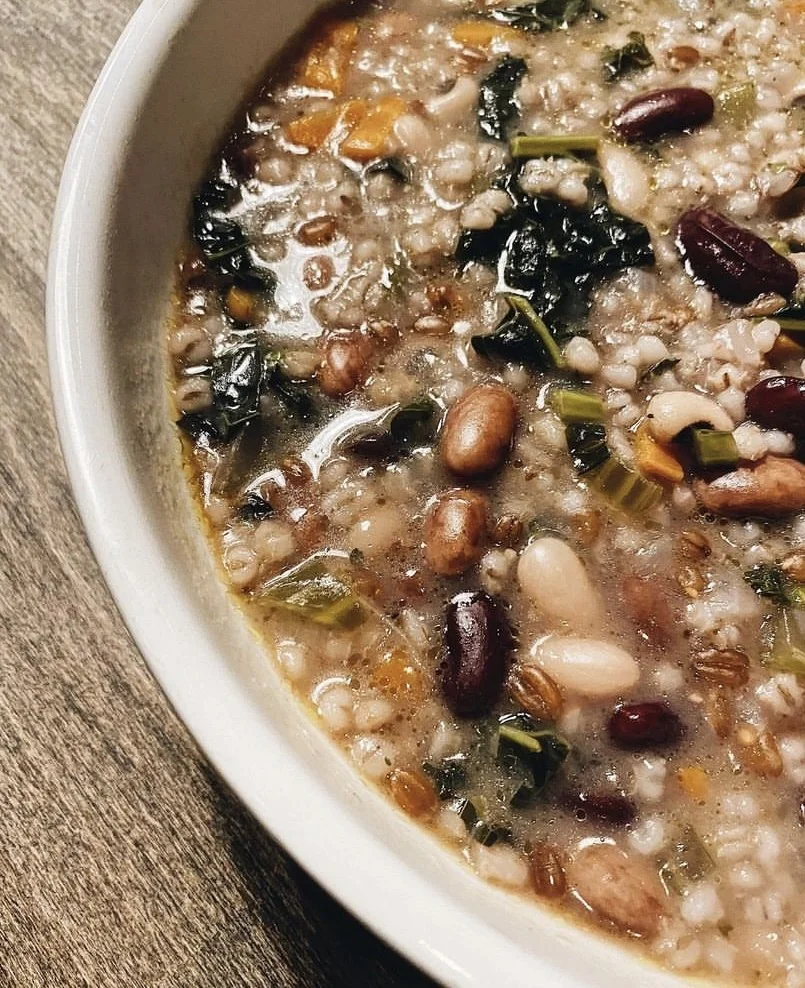Serves 4-6
This soup is ancient, so to speak. Hailing from Matera, particularly the Sassi area which has been inhabited since Paleolithic times. Several of the little markets and bars within the Stassi sell the Crapiata soup mix used to make this humble recipe and after eating a very delicious bowl of this traditional soup in a small bar (along with some incredible bread made from the golden wheat from Lucano), I bought several bags of it. You can of course, as I have since had to, recreate this mix at home with basic pantry staples as detailed in the recipe below.
I also brought home bags of the peperoni cruschi, a dried pepper from Basilicata - you can add a couple of these to the soup as well if you can find them (I have been able to source them from online Italian specials food stores)
Use best quality olive oil and serve with a delicious bread.
100 Grams each of Dried Cannellini Beans, Small Red Beans & Romano Beans
2-3 Tbsp Olive Oil
2 Small Shallots, Peeled and Finely Chopped
3 Stalks of Celery, Chopped (Include some of the leafy heart as well)
3 Carrots, Cleaned and Chopped
Salt and Pepper
100 Grams Each of Orzo Barley, Farro & Millet
2 Tbsp Tomato Paste
2-3 Fresh Bay Leaves
3L Stock
Water
1 Bunch Cavolo Nero, Stemmed and Chopped
Parmigiano Reggiano
24 hours in advance, soak the beans in a large bowl or pot with plenty of water to cover.
Drain the beans after they have soaked and set aside. In a large heavy pot, heat the olive oil over medium heat and add in the soffritto (shallots, celery and carrots). Add salt and pepper and sauté for 5-6 minutes. Add in the grains and stir to coat in the oil. Add in the tomato paste and bay leaves and stir. Tumble in the beans.
Pour in the stock and add enough water as needed to cover the ingredients by about 2 inches.
Bring to a low boil, reduce heat and cover. Cook for 40 minutes and then add in the Cavolo Nero. Return the lid and cook for a further 30-40 minutes. Test the beans for doneness by pressing one between your thumb and index finger - if the bean easily gives way to the pressure, they are done - you want some texture, not mush.
Taste for seasoning and add more salt and pepper as needed.
Serve with a heavy grating of fresh parmigiano, a thick drizzle of best quality olive oil and a chunk of good bread on the side.
